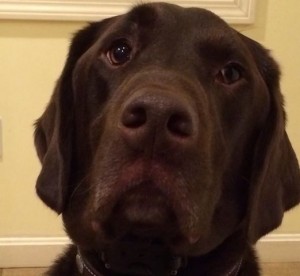 My alarm rings every morning at 5:10, or rather it plays the latest pop music in an attempt to rouse me for the day. Ten minutes later, always hitting snooze once, I rise and our dog, Moses is moving off his bed and taking his first stretch of the day. Within 15 minutes Moses and I are leaving the house for a morning walk. We are among the first up in the neighborhood, a fact I like and one which actually helps to encourage me out of bed. I would rather walk in the quiet of the morning, fog rising off the lake and just one fellow early riser who waves from his porch but knows enough not to break the silence and the peace.
My alarm rings every morning at 5:10, or rather it plays the latest pop music in an attempt to rouse me for the day. Ten minutes later, always hitting snooze once, I rise and our dog, Moses is moving off his bed and taking his first stretch of the day. Within 15 minutes Moses and I are leaving the house for a morning walk. We are among the first up in the neighborhood, a fact I like and one which actually helps to encourage me out of bed. I would rather walk in the quiet of the morning, fog rising off the lake and just one fellow early riser who waves from his porch but knows enough not to break the silence and the peace.
My walk is anywhere from 1650 steps to 2800 steps, depending on the humidity. Less humid and Moses and I can walk the longer route and we will not be bothered by the deer flies that plague us on humid mornings. And I don’t actually have to count my steps, I wear a Fitbit and strive to stride 10,000 times each day. Sometimes I make it, sometimes I don’t but having a goal is a good thing.
In a recent study conducted by neuroscientist, Kirk Erickson, at the University of Pittsburgh, an increase of 2% in the size of the hippocampus was measured in a group of men between 60 and 80 years old who walked briskly around a track, 30-45 minutes 3 times per week for a year. This compares to a decrease of the hippocampus of 1-2% found in a control group who did nonaerobic exercise 3 times per week for the same length of time. A decline in hippocampas volume of 1-2% is typical in old age. http://www.ft.com/cms/s/0/741e9838-972f-11e3-a274-00144feab7de.html#axzz3iXYNMyum
In addition, the walking group showed increased scores on memory tests, not surprising as the hippocampus is the area of the brain essential to making new memories. Therefore, as the hippocampus volume decreases, as in Alzheimer’s Disease, the ability to remember if you ate lunch or if a friend just visited is significantly impacted and eventually short term memory is severely diminished.
So this net gain of 3-4% volume in the hippocampus is dramatic. And it steers us in a direction as we age. Some suggest that even more important than doing a crossword puzzle is a walk for increasing or preserving memory.
The Walk to End Alzheimer’s is approaching. This an annual event in which more than 450,000 people will unite to raise awareness and money in the fight to end this disease. This is an important event and an important cause. Today the US has an estimated 5.3 million people living with Alzheimer’s Disease. By 2025 this number will be 7.1 million, by 2050 this number will triple. The cost of care today is 226 billion dollars and in 2050 it is likely to be 1.1 trillion. This disease, along with other forms of dementia, has no cure. It is the 6thleading cause of death. And it knows no boundaries. Rich, poor, famous or unknown, anyone can get Alzheimer’s Disease. We will all be touched by this crises as just the dollars alone needed to provide care will wreak havoc on medical care.
I will be walking in September with The Walk to End Alzheimer’s Disease and other dementias. Meanwhile I will continue to every day to hopefully increase the size of my hippocampus and improve my memory. If you do not walk as a regular routine, maybe joining the Walk to End Alzheimer’s is a good place to start. Just 30 minutes 3 times per week after that and you may be on your way to changing your future and preserving your memory. Find a walk at alz.org

